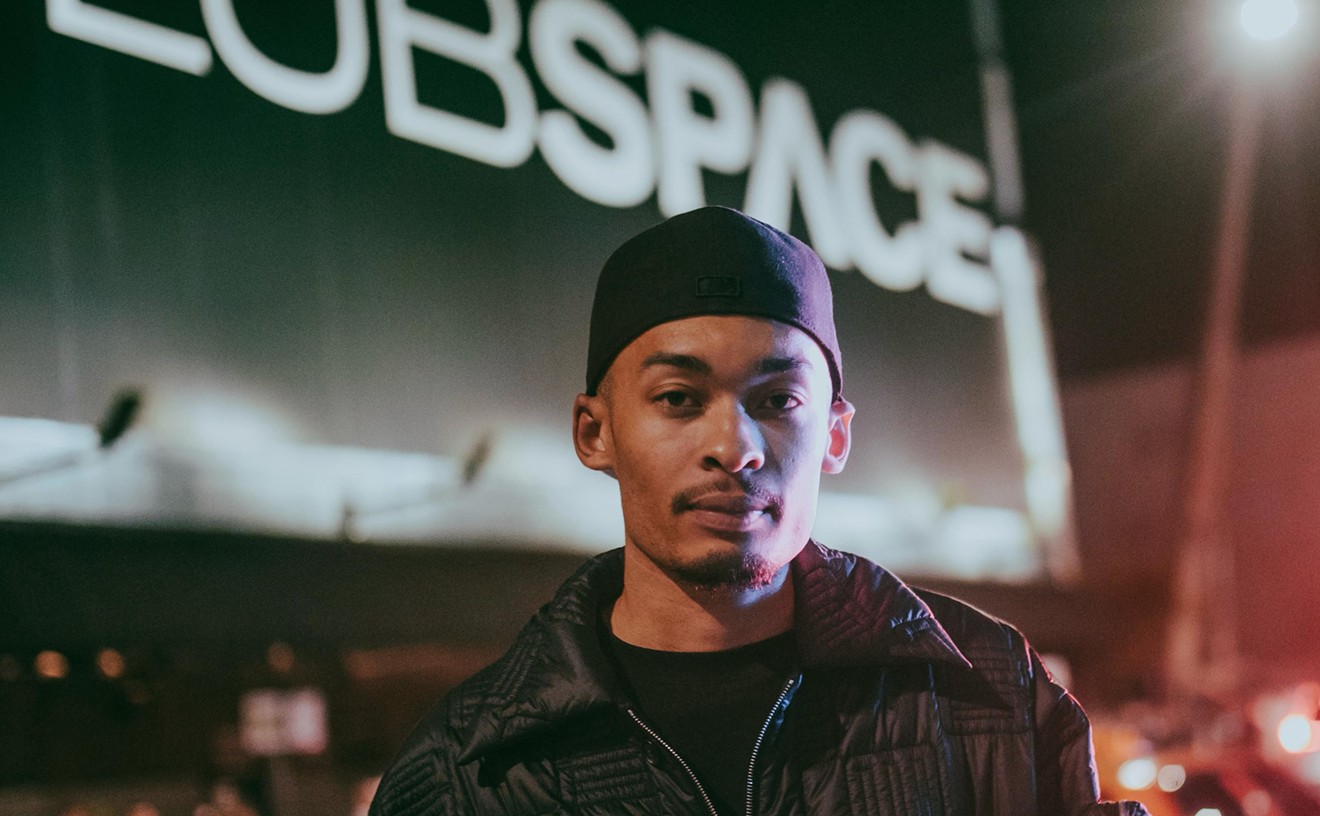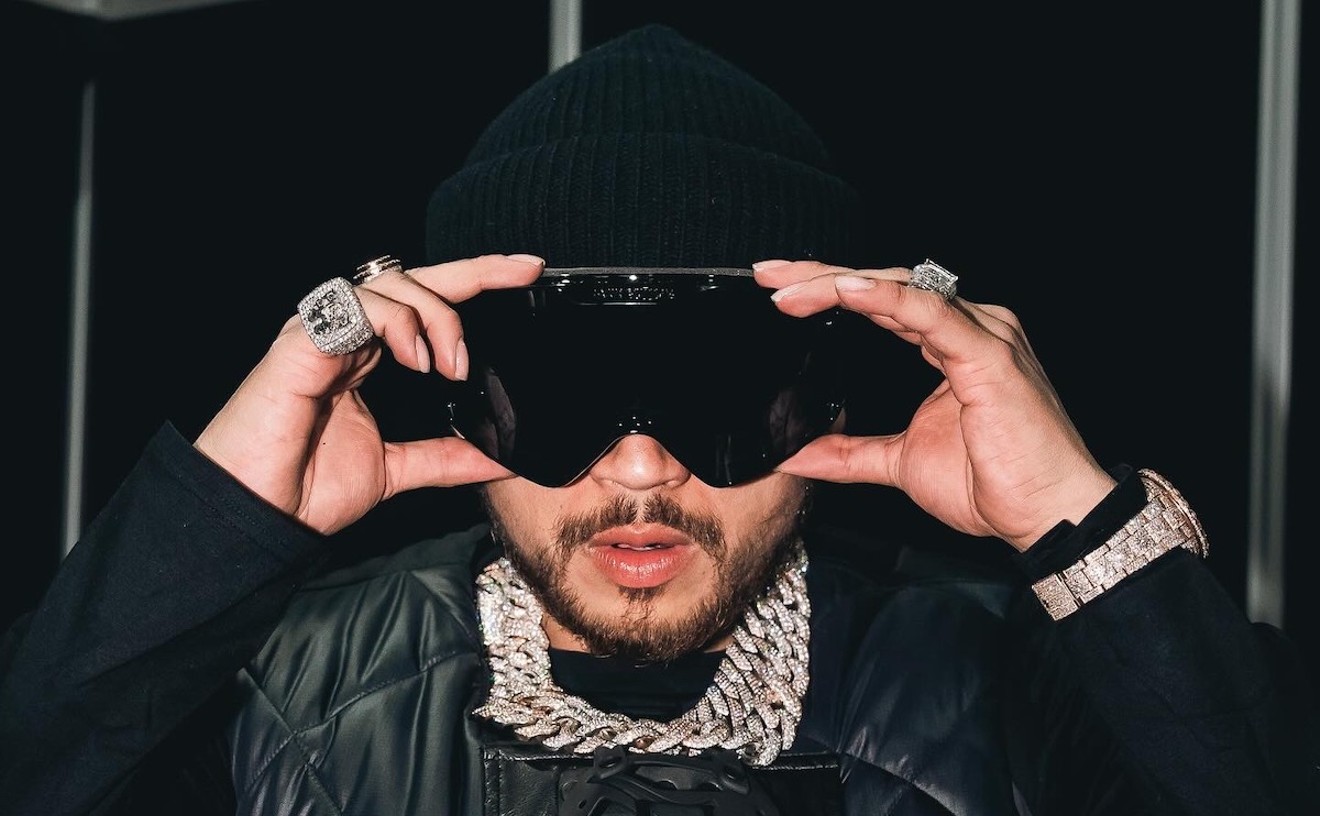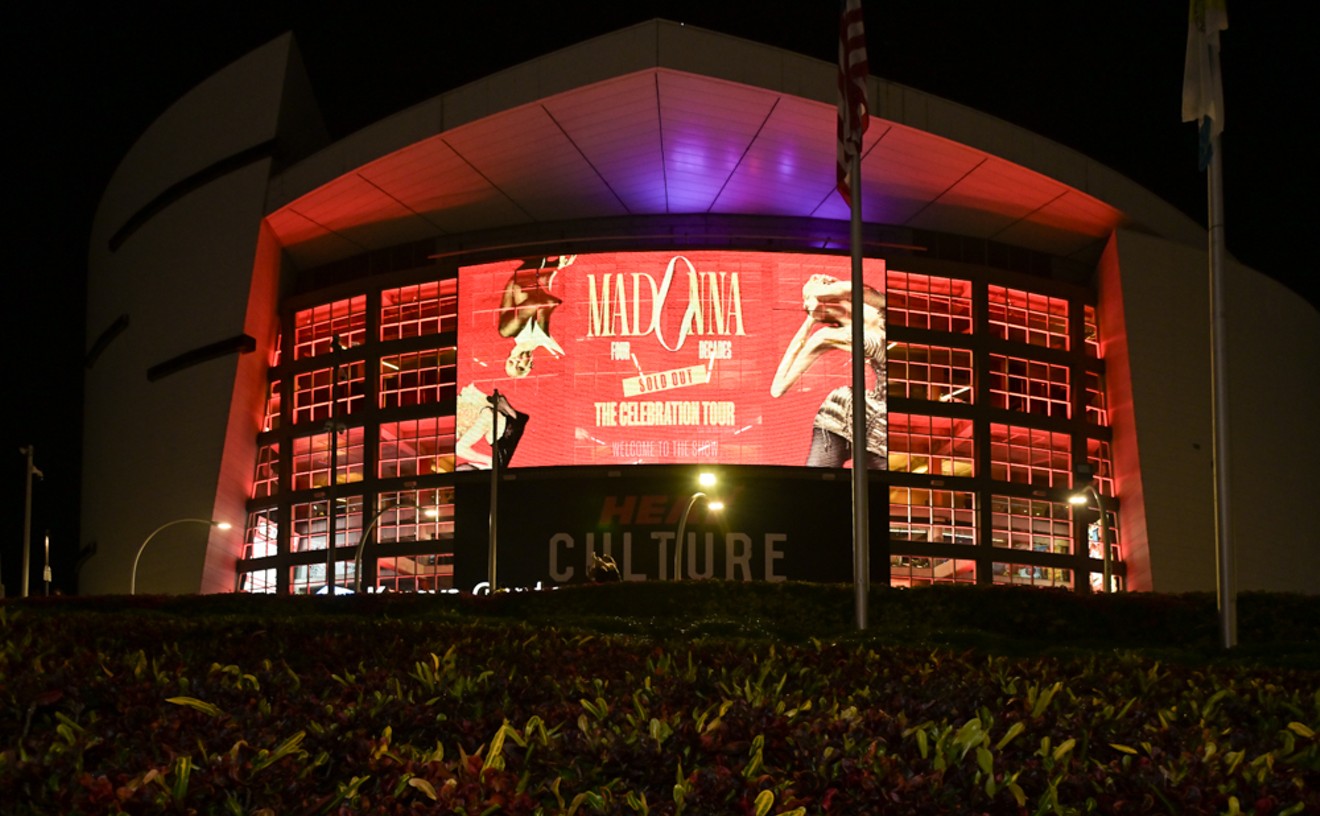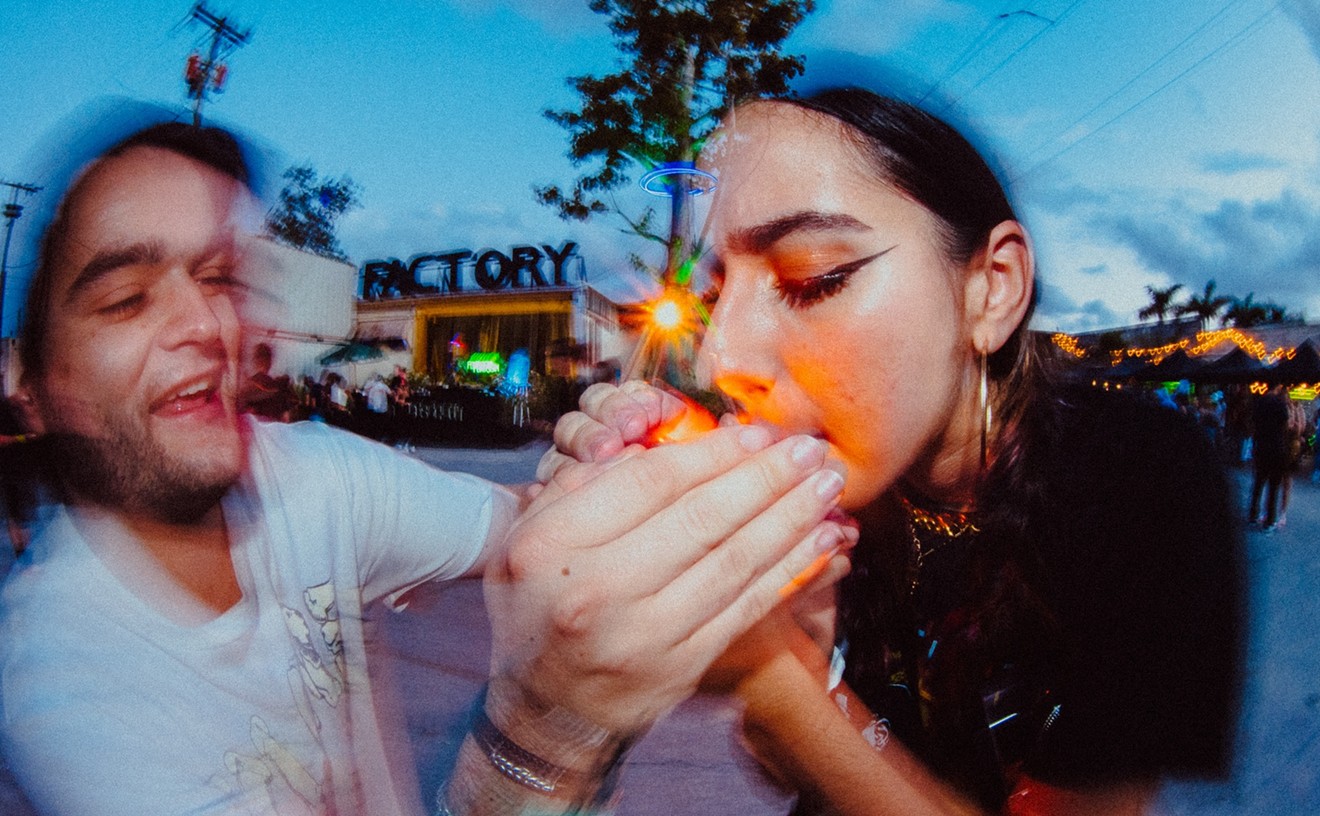On Halloween 2007, Tallahassee PD received a noise complaint for a house nestled in the woods. When the police arrived, they discovered what Sebastian Solano calls "probably the biggest Halloween party Tallahassee has ever seen." Solano puts the attendance around 5,000. "There were crowds of people walking in the street," he says. "It was as if there was some massive festival going on."
"I believe we're a big reason why EDM became so big in America."
tweet this
Lukasz Tracz remembers it more like 400 people. Either way, big. The party happened at Tracz's house. He, Solano, Tracz's twin brother Patryk, and close friend Paul Campbell promoted the event, hired bouncers, and everything. The party was popping for less than an hour before the fuzz showed up, confronted Tracz — who was dressed as Michael Jackson — and shut the event down. Tracz stayed behind with the cops. His friends assumed he was arrested, so they and the leftover guests found rides elsewhere. The partying, after all, must go on.
The four friends who threw that short-lived Halloween bash have since created what's billed as the "World's Largest Paint Party." Life in Color is an atmosphere and an event that's often conflated with electronic dance music at large. When baby-boomers close their eyes and visualize today's EDM culture, they see Life in Color — fluorescent-paint-splattered teens in a Jackson Pollack acid trip. Encouraged to wear white, LiC attendees are periodically and unapologetically sprayed with paint such that everybody becomes a canvass. Huge hoses shoot pigment hundreds of feet. Revelers dance to EDM, fist-pump bass, and jump in sync at each drop.
The LiC concept wasn't invented by its founders. While at Florida State University, the guys attended an unofficial paint party called Dayglow, which was kind of a fraternity and sorority tradition at the time. The four were already versed in aspects of party planning, promotion, and execution. In fact, their parties were so well received around Tallahassee that the buddies became business partners when they created the company Committee Entertainment to manage all the logistics behind providing a good time. After attending Dayglow, the guys decided to trademark the name and throw their own event. "I really liked the name," Solano says, "and I did research and tried to find out who originated it, but there was no person per se who created it." So they adopted the name and set out to enhance the concept and capitalize off it. "It made sense to use a name that, at least in North Florida, already had that recognition behind it."
Beginning in Miami in 2007 at Allure nightclub with some 600 attendees, the newly established Dayglow marched up the state to Orlando, where the guys rented out the UCF arena for their second event. They soon spread beyond Florida to college towns across the nation. Many cities didn't know what hit them when thousands of members of their student body stumbled home from this or that event covered in colors. Four thousand people attended the Dayglow in Bethlehem, Pennsylvania — where 35 attendees were carted off to the hospital due to heat exhaustion, dehydration, and drug and alcohol abuse in what an official called a "mass casualty event." No substances were found at the event, a testament to the apparent success of security checks at the door.
Solano recognizes the oft-made connection between EDM and drug use but insists, "We want our attendees to get high off the paint and music."
In just six years, Dayglow went from a college craze to a global event. In hindsight, its timing was perfect. It caught the EDM wave just as it broke. In other ways, Dayglow seemed to create the contemporary EDM scene itself. "We were the first really to do aftermovies," Tracz claims. He's referring to short, highly produced videos that recap the concert alongside tracks by big-name acts. He and Solano agree these slick films enticed viewers to attend by tapping into the ever-powerful fear of missing out.
"At the time, EDM wasn't even that popular," Solano says. "People just saw these videos of crazy paint parties and knew they had to go. In the beginning, people just came for the experience, not the music. I believe we're a big reason why EDM became so big in America, because we converted all these people who just came for the paint party."
EDM concert conglomerate SFX Entertainment purchased Committee Entertainment in 2012 — an acquisition that established the company's worth but came with a lawsuit from an established manufacturer also named Dayglow. They settled out of court and agreed to change the name.
"The whole name change was probably the toughest six months of our lives," Tracz says. "I'm sure all the guys would agree with that. It was like we had a baby and it's name was Dayglow. Six years later, someone comes and says we've got to change our baby's name."
The guys brainstormed other monikers, such as Megaglow, Ultraglow, and Glowfest. "They really wanted a one-word name," Tracz says of his partners. "But I made an executive decision and renamed it Life in Color." As the marketing man behind Dayglow, Tracz described the choice as strategic. "At that time of the lawsuit, we had the Dayglow: Life in Color tour. I decided to brand the Life in Color side more so our fans would get used to hearing it.
"Now I think it's a great name. It fits us perfectly."
Dayglow's name change to Life in Color was one of many obstacles the company faced over the years. Working with friends may sound fun, but it can lead to difficulties both personal and professional. Missed meetings and yelling became common. "It's one thing if your friend is late to a meeting," Solano says. "It's another thing if that person is your business partner."
Each partner eventually found an appropriate fit, but Tracz describes how, prior to deciding that Solano should be CEO, each partner played that role. "There were times when we clashed heads," Tracz says. "And at times egos got in the way, but in the end we all wanted to win together."
Perhaps another significant obstacle in LiC history was when, two years ago, they added rapper 2 Chainz to the lineup. "I remember this like it was yesterday," Tracz says of the fan fallout from his idea. "It was the first time we booked a hip-hop guy. Sebastian was against it. Paul was kind of on my side, and my brother thought maybe we should or shouldn't. I was all about expanding. Music shouldn't be just one genre. I was so excited to post the announcement, but as soon as I did, our whole fan base bashed us. 'Fuck you guys!' 'You're ruining EDM!' I was on my computer, and my legs just went numb."
Tracz may have regretted the decision at the time, and Solano may have felt a hint of resentment toward his partner, but both men look back on the move as relatively progressive and valuable for the company. Last year, they brought Juicy J to the stage. This year, they've booked Big Sean.
Last year, Life in Color cofounder Paul Campbell moved on to pursue his own endeavors, which Tracz describes as "app development stuff." And Tracz is moving to California to make films. Still, he insists everyone is on good terms. Solano likewise vouches that the friendship among the four cofounders is still strong. "We're like brothers," he says.
Referring to the Halloween party that cops crashed in 2007, Solano explains his obligation to his clients. "We had this responsibility to everybody who came, so we moved the event to this building and held a different party in each apartment. Finally, at 2 or 3 a.m., Lukasz showed up." The officers had given him a noise violation and sent him on his way. "We went wild because we all thought he was in jail. It just brought so much energy to the party."
Solano describes that Halloween with as much affection as he speaks about recent Life in Color events. Many things were similar then. The four friends threw a tremendous party that grew so huge it was shut down. But they met that adversity, adapted, and moved the party elsewhere. Of course, one thing was missing: paint.
Which brings up one of the biggest unanswered questions about Life in Color: Why the hell do people like having paint thrown on them? Solano puts it simply: "Paint is power."
Life in Color with Jack Ü, Steve Aoki, Big Sean, and others. 2 p.m. Saturday, January 16, at Sun Life Stadium, 347 Don Shula Dr., Miami Gardens. Tickets cost $110 to $135 plus fees via licmiami.com.










